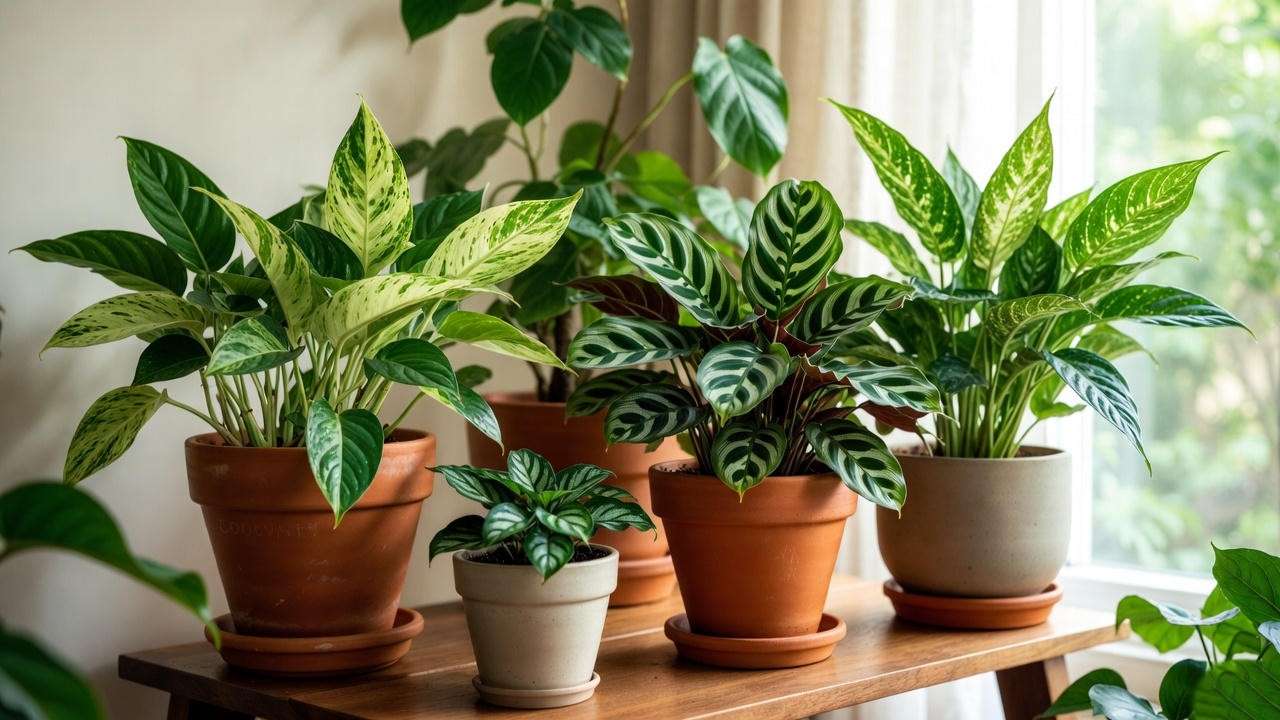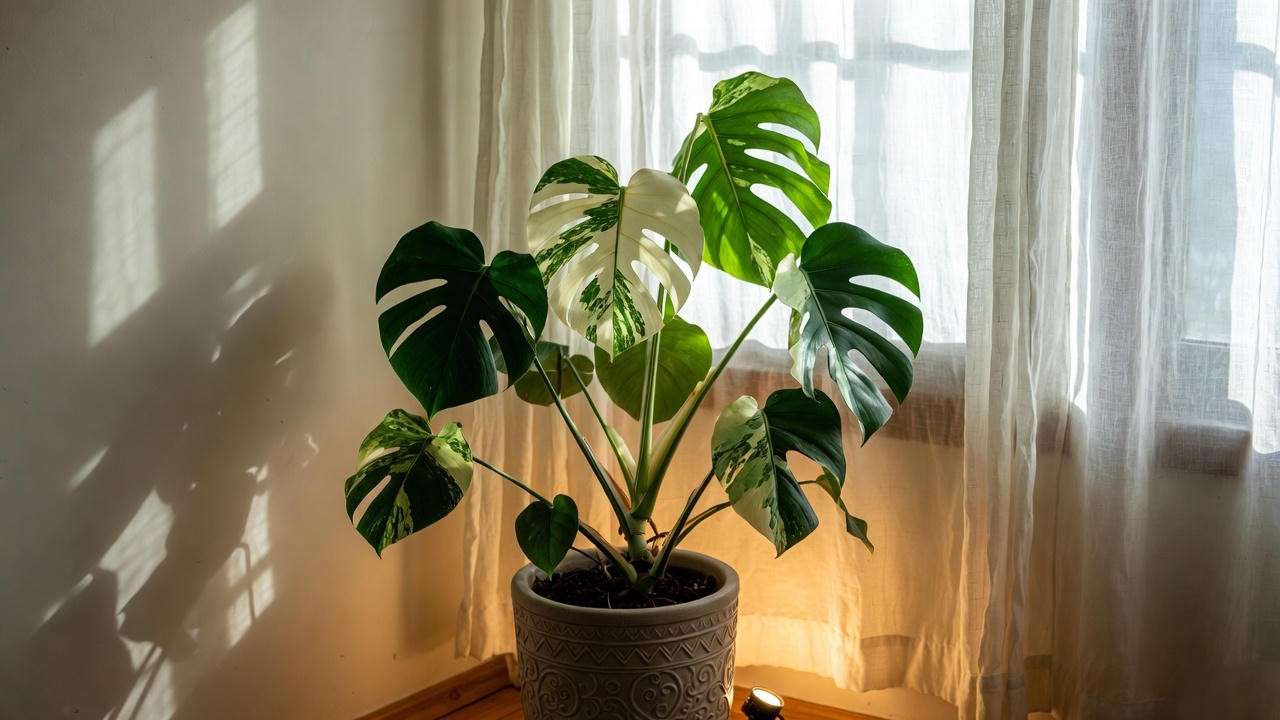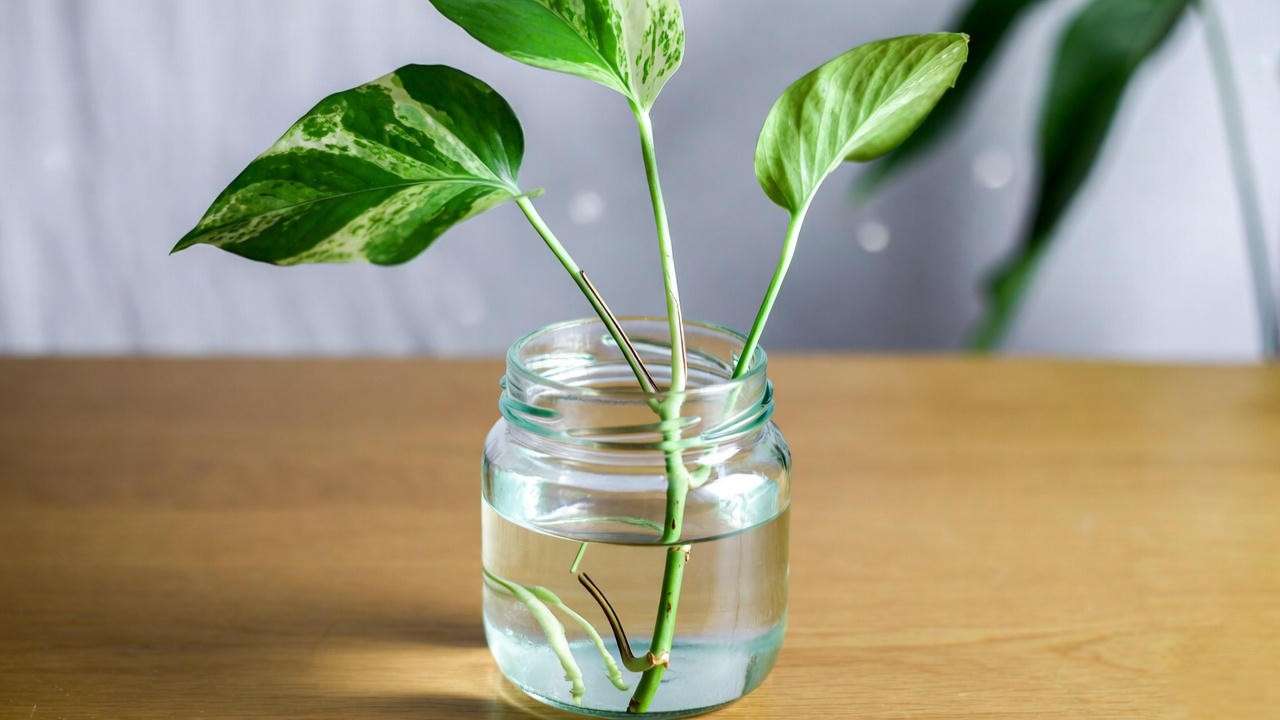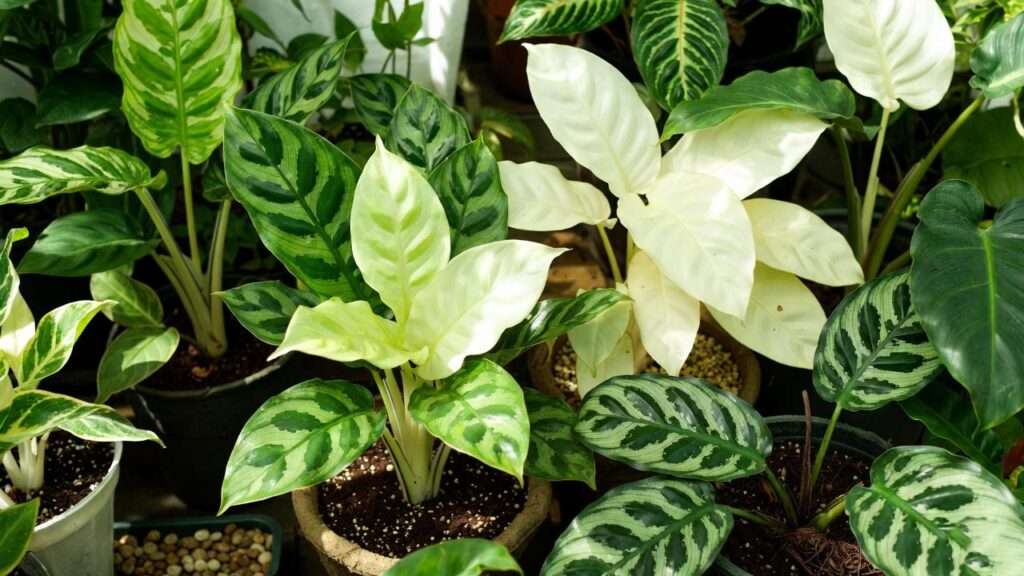Imagine walking into a room where lush, green and white plants cascade from shelves, their creamy variegated leaves catching the light like living works of art. These stunning plants—like the Marble Queen Pothos or Variegated Monstera—are more than just decor; they’re a statement of style and a testament to your plant care skills. But let’s be honest: keeping those striking green and white patterns vibrant can feel like a challenge. Yellowing leaves, fading variegation, or droopy foliage can turn your plant dreams into frustration. Don’t worry—I’m here to help. As a horticulturist with over a decade of experience nurturing tropical plants, I’ve distilled seven expert tips to ensure your green and white plants thrive. Whether you’re a beginner or a seasoned plant parent, this guide will solve your care struggles and elevate your indoor jungle. Ready to unlock the secrets to lush, variegated beauties? Let’s dive in!
What Makes Green and White Plants Special? 🌟
The Science Behind Variegation
Variegation—the mesmerizing mix of green and white on plant leaves—occurs due to variations in chlorophyll production. Chlorophyll, the pigment responsible for photosynthesis, is less abundant in white or cream-colored areas, creating those stunning patterns. Plants like the Calathea Orbifolia, with its silvery-green stripes, or the Variegated Peace Lily, with creamy splashes, owe their beauty to genetic mutations or environmental adaptations. According to Dr. Jane Ellis, a botanist at the University of California, “Variegation is nature’s artwork, but it demands precise care to maintain its vibrancy.” These plants are not just visually appealing; studies, like those from the Royal Horticultural Society, show they boost mood and air quality, making them perfect for homes or offices.

Common Challenges with Variegated Plants
Green and white plants are undeniably gorgeous, but their unique needs can trip up even experienced growers. The white areas, with less chlorophyll, make these plants more sensitive to light, water, and nutrient imbalances. Common issues include yellowing leaves, fading variegation, or slow growth. The good news? With the right knowledge, these challenges are entirely manageable. This article will equip you with practical, science-backed strategies to keep your variegated plants flourishing.
The 7 Expert Tips for Thriving Green and White Plants 🌿
Tip 1: Master the Art of Lighting for Variegation 💡
Light is the lifeblood of green and white plants. Too little, and the white patterns fade as the plant struggles to photosynthesize; too much, and leaves can scorch. Most variegated plants, like the Pothos ‘Marble Queen’ or Monstera Albo, thrive in bright, indirect light—think near a north- or east-facing window with filtered sunlight. For example, place your Calathea in a spot where it gets dappled light, avoiding direct afternoon sun. Dr. Ellis notes, “Variegated plants need 4-6 hours of indirect light daily to maintain their patterns.” Use sheer curtains to diffuse harsh rays, and rotate your plants weekly for even exposure. If natural light is limited, consider a grow light (6500K full-spectrum bulbs work wonders).

Tip 2: Water Wisely to Avoid Root Rot 🚿
Overwatering is the number-one killer of green and white plants. Their tropical roots demand well-draining soil and careful watering. Check the top inch of soil with your finger or a moisture meter; water only when it feels dry. For a Variegated Peace Lily, water when the leaves start to droop slightly—it’s their way of signaling thirst. Use pots with drainage holes and a well-aerated mix (e.g., 50% potting soil, 30% perlite, 20% peat moss). A real-life example: my client Sarah revived her wilting Monstera by switching to a terracotta pot and watering every 10-14 days. Consistency is key—avoid the “soak and forget” approach.
Tip 3: Optimize Humidity for Lush Foliage 💧
Many green and white plants, like Calatheas or Syngoniums, hail from humid tropical environments and crave 50-60% humidity. Low humidity can cause crispy leaf edges or drooping. To boost humidity, try these methods:
- Pebble Tray: Fill a tray with pebbles and water, placing your pot on top (ensure the pot doesn’t sit in water).
- Humidifier: A small ultrasonic humidifier near your plants works wonders.
Grouping: Cluster plants together to create a microclimate.
- For a DIY solution, mist your plants lightly every few days, but don’t overdo it to avoid fungal issues. My own Calathea Orbifolia thrives at 55% humidity, thanks to a pebble tray setup.

Tip 4: Choose the Right Soil and Pot 🪴
The right soil mix is critical for green and white plants. A blend of 60% peat-based potting soil, 30% perlite, and 10% orchid bark ensures drainage and aeration. Avoid heavy, water-retaining soils that suffocate roots. Choose pots with drainage holes—terracotta is ideal for wicking excess moisture. For sustainability, consider recycled plastic pots or biodegradable options. When repotting, do so every 1-2 years or when roots crowd the pot. I once helped a friend repot her Spider Plant into a slightly larger pot with fresh soil, and it doubled in size within months!
Tip 5: Feed Your Plants for Vibrant Growth 🌱
Variegated plants need nutrients to support their growth, but over-fertilizing can burn their delicate leaves. Use a balanced liquid fertilizer (e.g., 10-10-10) diluted to half strength every 4-6 weeks during spring and summer. Pause fertilizing in fall and winter when growth slows. A 2021 study from the Journal of Plant Nutrition found that variegated plants benefit from slightly higher potassium to maintain leaf color. Avoid fertilizer buildup by flushing the soil with water every few months. My Pothos ‘N’Joy’ stays lush with monthly feedings from April to August.
Tip 6: Prune and Propagate for Health and Growth ✂️
Pruning keeps your green and white plants shapely and encourages vibrant growth. Regularly trim yellow or damaged leaves with clean, sharp scissors to prevent disease spread. For vining plants like Pothos or Syngonium, cut just above a leaf node to promote bushiness. Propagation is a rewarding way to multiply your plants. For example, to propagate a Marble Queen Pothos:
- Cut a 4-6 inch stem with at least two nodes.
- Place the cutting in water, ensuring nodes are submerged.
- Keep in bright, indirect light and change water weekly.
- Roots should form in 2-4 weeks, ready for potting. I’ve propagated dozens of variegated plants this way, and it’s thrilling to see new growth! For a visual guide, an infographic showing node placement and root development would be a great addition to this article.

Tip 7: Watch for Pests and Diseases 🐞
Green and white plants can attract pests like spider mites, mealybugs, or aphids, especially in dry conditions. Check the undersides of leaves for tiny webs, white cottony spots, or sticky residue. If you spot pests, act fast:
- Neem Oil: Mix 1 tsp neem oil with 1 quart water and a drop of dish soap; spray weekly.
- Soap Spray: Use a mild dish soap solution to wipe leaves.
- Isolation: Quarantine affected plants to prevent spread. Last year, I saved a client’s Variegated Monstera from spider mites using neem oil, and it’s now thriving. Regular inspections and good air circulation prevent most issues. If you notice black spots or mushy stems, cut away affected areas and adjust watering to combat fungal diseases.
Troubleshooting Common Green and White Plant Problems 🛠️
Why Are My Plant’s White Leaves Turning Yellow?
Yellowing white leaves often signal too much direct sunlight, nutrient deficiencies, or overwatering. If your plant gets intense sun, move it to a shadier spot with indirect light. Test soil moisture to rule out root rot, and ensure you’re fertilizing lightly during the growing season. For instance, a nitrogen deficiency can cause yellowing; a balanced fertilizer should help. Recovery typically takes 2-4 weeks with proper adjustments.

How to Restore Fading Variegation
Fading variegation—when white areas turn green—often results from insufficient light. Variegated plants need bright, indirect light to maintain their patterns, as low light prompts the plant to produce more chlorophyll. Gradually increase light exposure over a week to avoid shock. If the issue persists, check for nutrient imbalances, as potassium supports variegation. I once revived a Calathea’s fading stripes by moving it closer to a window and adjusting its fertilizer, with results visible in a month.
Dealing with Drooping or Wilting Leaves
Drooping leaves can stem from underwatering, overwatering, or low humidity. Check the soil: if dry, water thoroughly; if soggy, let it dry out and improve drainage. Boost humidity with a pebble tray or humidifier, especially for tropical varieties like Calatheas. If roots appear brown and mushy during repotting, trim them and repot in fresh soil. A quick fix saved my friend’s Spider Plant when we caught the issue early.
Best Green and White Plants for Beginners 🌿
Not all green and white plants are high-maintenance. Here are three beginner-friendly options, with a comparison of their care needs:
| Plant | Light | Water | Growth Rate |
| Pothos ‘Marble Queen’ | Low to bright, indirect | Every 1-2 weeks | Fast |
| Spider Plant | Bright, indirect to moderate | Weekly | Moderate |
| Variegated Peace Lily | Low to bright, indirect | When soil is dry or drooping | Slow |
These plants are forgiving and perfect for new plant parents. The Pothos, for example, thrives even with occasional neglect, as confirmed by nursery experts at the Missouri Botanical Garden.
Advanced Care Tips for Seasoned Plant Parents 🌱
For experienced growers, take your green and white plant care to the next level:
- Repotting: Repot every 1-2 years in spring, checking for root-bound conditions. Use a pot 1-2 inches larger to avoid stress.
- Seasonal Adjustments: Reduce watering and stop fertilizing in winter, as most plants enter dormancy.
- Rare Varieties: For collectors, try rarer species like Monstera Albo or Philodendron Birkin, which require precise light and humidity. A professional grower I know swears by monthly root inspections for her Monstera Albo to catch issues early. These tweaks ensure long-term health and stunning growth.
The Environmental Impact of Growing Green and White Plants 🌍
Green and white plants do more than beautify your space. The NASA Clean Air Study (1989) found that plants like Peace Lilies and Spider Plants remove toxins like benzene and formaldehyde from indoor air. They also boost mental well-being—research from the Journal of Environmental Psychology (2020) shows that indoor plants reduce stress by 15%. For sustainability, compost plant trimmings and use organic fertilizers like fish emulsion. Choosing eco-friendly pots, like those made from recycled materials, further reduces your environmental footprint.
FAQs About Green and White Plant Care ❓
Q1: Can green and white plants survive in low light?
Some, like Pothos and Spider Plants, tolerate low light, but variegation may fade. Bright, indirect light is ideal for most.
Q2: How often should I fertilize my variegated plants?
Fertilize monthly with diluted liquid fertilizer during spring and summer; skip winter to avoid overfeeding.
Q3: Why is my plant losing its white variegation?
Low light or nutrient imbalances are common culprits. Increase indirect light and ensure balanced fertilization.
Q4: Are green and white plants safe for pets?
Some, like Spider Plants, are pet-safe, but others, like Peace Lilies, are toxic. Check ASPCA’s plant safety list before buying.
Q5: How can I propagate my green and white plant successfully?
Take stem cuttings with nodes, root in water or soil, and keep in bright, indirect light for 2-4 weeks.
Conclusion: Your Path to Thriving Green and White Plants 🌟
With these seven expert tips—mastering light, watering wisely, optimizing humidity, choosing the right soil, fertilizing properly, pruning strategically, and preventing pests—your green and white plants will flourish like never before. Whether you’re nurturing a Pothos or a rare Monstera Albo, these strategies address the unique needs of variegated plants, ensuring vibrant foliage and healthy growth. Start applying these tips today, and share your progress in the comments or on social media with #VariegatedPlantCare. Want more plant care wisdom? Explore our other guides on indoor plant care or join our newsletter for weekly tips. Your dream jungle awaits! 🌿













